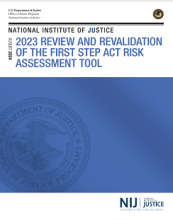Ethnic groups
Differential Associations Between Legal System Contact and Internalizing Symptoms Among Latino, Black, and White Youth
Race and Ethnicity: What Are Their Roles in Gang Membership?
Court Decision-Making in Domestic Violence Cases: An Analysis of the Case Processing Pipeline in South Carolina
Constructing Hate Crimes: Does Respondent's Racial/Ethnic Identity Matter?
Effects of Legal Supervision on Narcotic Addict Behavior: Ethnic and Gender Influences
Evaluation of a 49 InDel Marker HID Panel in Two Specific Populations of South America and One Population of Northern Africa
Serious Drug Abuser Scale Based on Manhattan Arrestees (1987- 1991)
Parent Perceptions of School Relationships: Considerations of Racial-Ethnic Differences and Youth's Peer Victimization
VICTIMIZATION AND PERCEPTION OF CRIME IN A GHETTO COMMUNITY
Advancing Justice for the Missing and Unidentified Through Research - 2024 NIJ Research Conference
Forensic science research is developing essential knowledge to fill in the holes in death investigations, creating new ways to identify challenging skeletal remains. These methods inform cause of death, time of death, and familial relationships to guide investigations, identify suspects, support prosecutions, and bring justice to families.
See the YouTube Terms of Service and Google Privacy Policy



